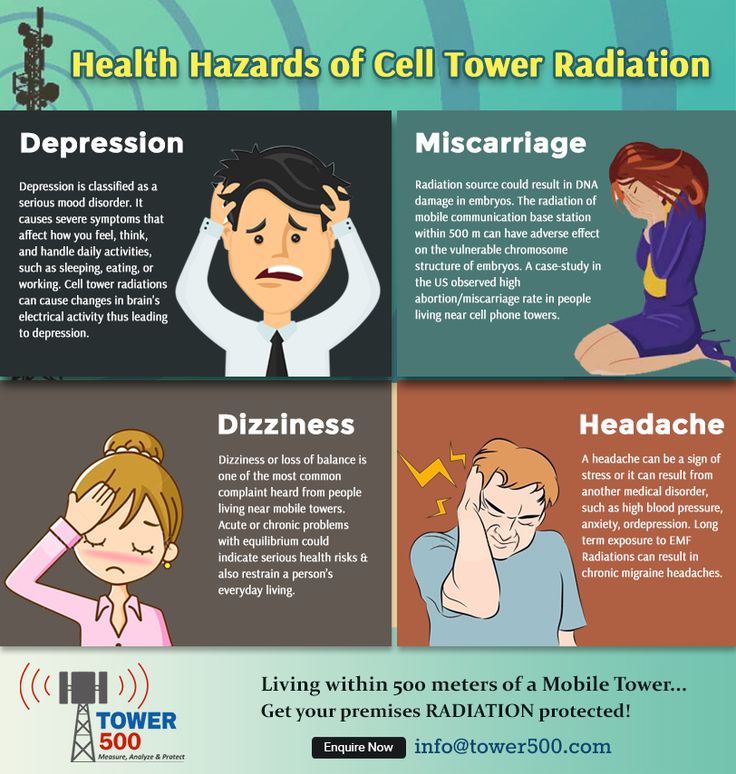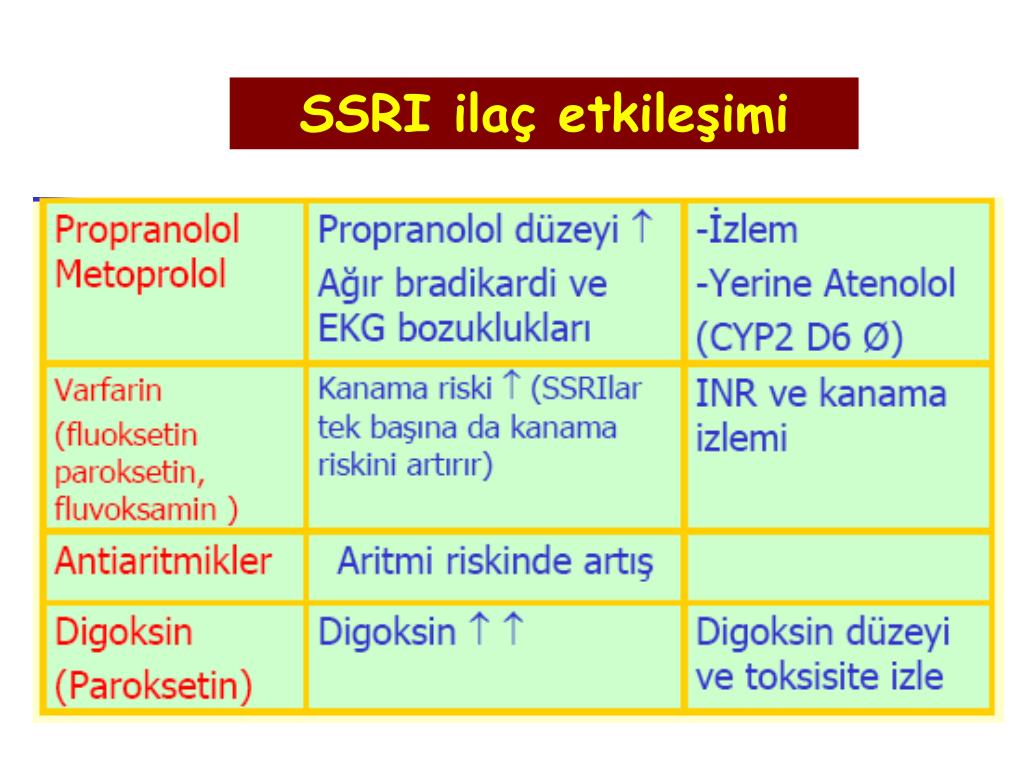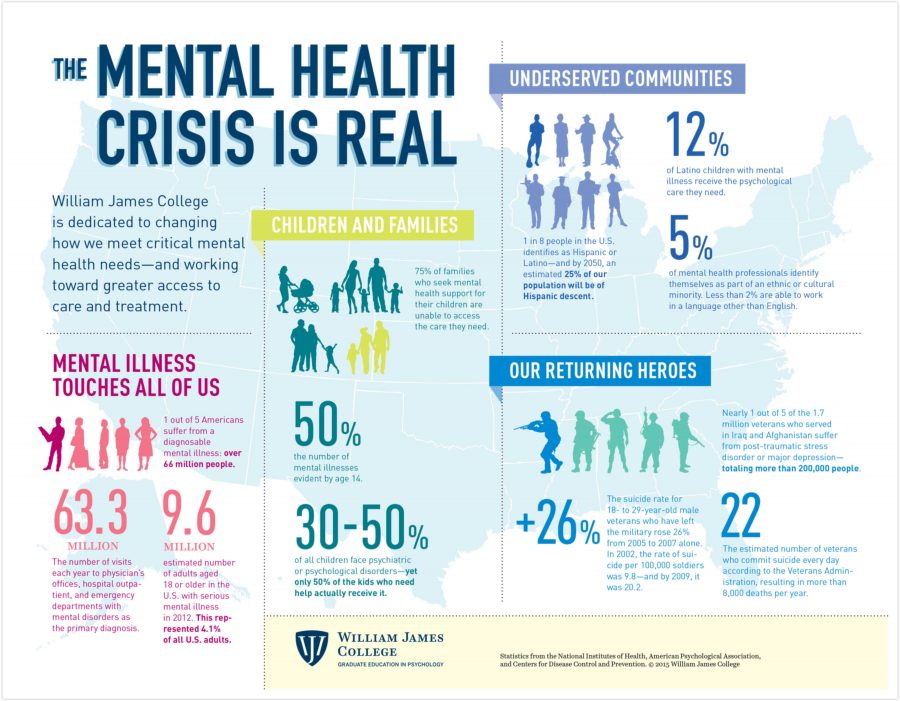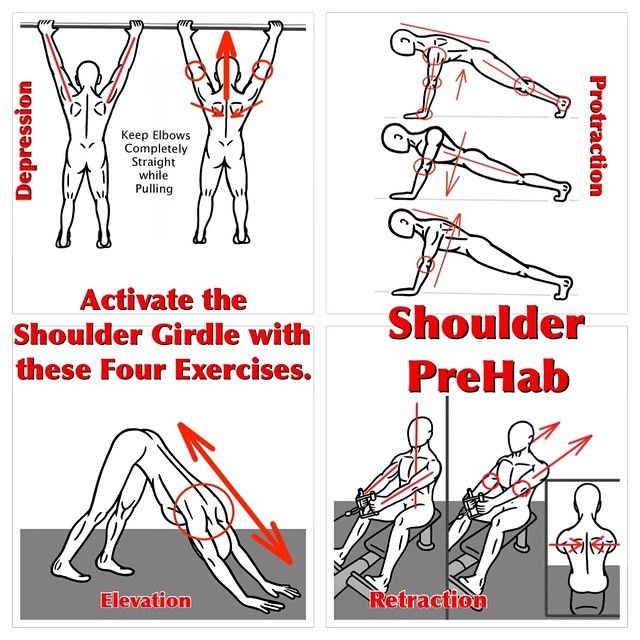Changing the brain
10 Things You Can Do to Literally Change Your Brain
We used to think that intelligence is innate. Some people have it, and others just don’t. The brain we’re born with is the one we’re stuck with for life.
That couldn’t be farther from the truth.
New and improving technologies in neuroscience are giving us deeper insight into the mysterious gray stuff between our ears. It turns out, our brains are surprisingly dynamic; we do things every single day that affect their structure and chemistry.
Below are ten of the ways that we can literally change our brains, for better or worse…
1. ExercisingPhysical activity is important for obvious reasons. However, exercise doesn’t just promote a healthier body. Recent research has shown that physical exercise also benefits your brain.
For starters, physical activity can improve your brain’s “plasticity” – a cerebral quality that affects memory, motor skills, and the ability to learn – according to a study conducted at the University of Adelaide in Australia. A small group of adults in their late 20s and early 30s participated in a 30-minute session of vigorous activity. Immediately after the session, their brains showed a significant increase in neuroplasticity.
If that’s not enough motivation to get out for run, research shows that exercise also release chemicals in the brain that make us feel happy. Buffer co-founder Leo Widrich explains that endorphins and a complicated-sounding protein called Brain-Derived Neurotrophic Factor (BDNF) are released in the brain as you do physical exercise. These two chemicals help fight stress and promote happiness. Endorphins are also known to give a feeling of euphoria, which would explain why some people can actually become addicted to exercise.
In short, exercise makes you smarter and happier at the same time. Sounds like a win-win to me.
2. SleepingSleep is an essential activity that not even science can fully explain. We know that it’s restorative, everyone does it, and a lack of it can be really bad.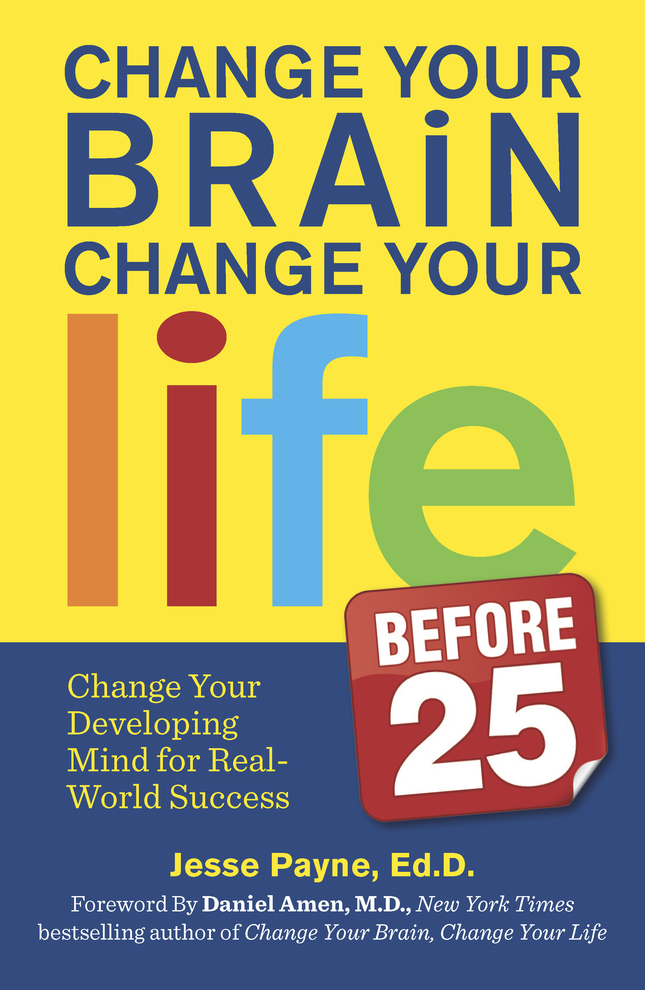 But researchers still struggle to understand why we sleep.
But researchers still struggle to understand why we sleep.
It certainly isn’t an energy-saving technique, as we only actually save roughly 50kCal over the course of an eight-hour sleep. Yet, going without sleep can make you irritable, lead to memory loss and false memories, and, in extreme cases, cause slurred speech and even brain damage.
So what happens when you sleep? Your brain gets to work archiving memories, making creative connections, and cleaning out toxins, as Huffington Post’s Carolyn Gregoire explains. Further, these benefits aren’t limited to a full night’s sleep. A short afternoon nap can provide you with a boost of energy equivalent to roughly one or two cups of coffee, as well as increased retention of facts and greater creativity.
In other words, if you’re not feeling on your toes at work or if you need some inspiration, one of the most effective things you can do is find a cozy corner and grab some rest. Just don’t blame us when your boss doesn’t believe you.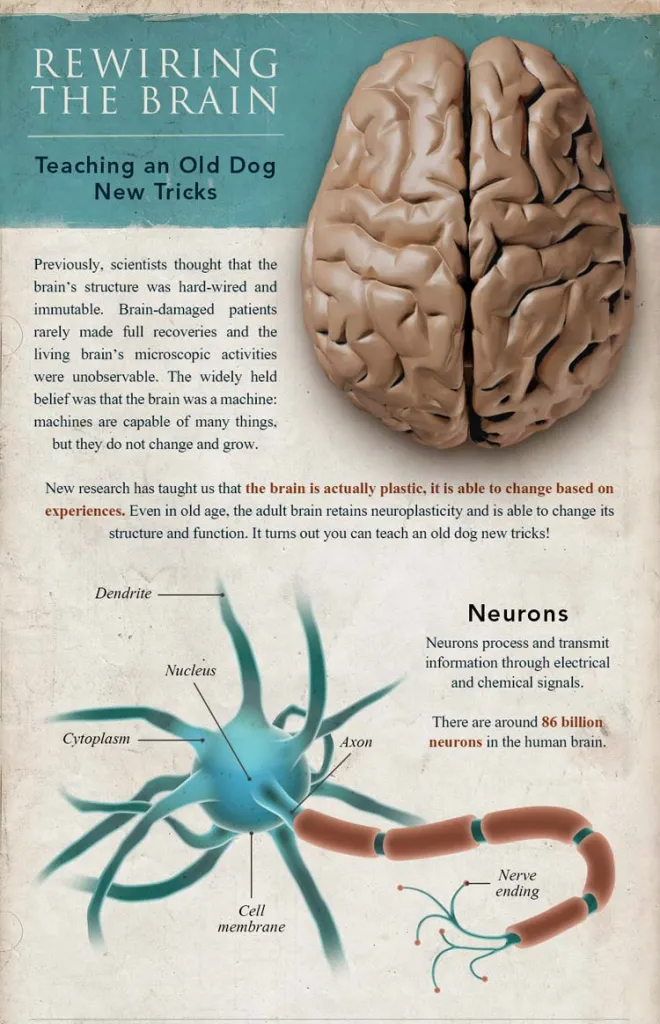
People have sworn by meditation for millennia, and for good reason. Meditation doesn’t just help you find emotional balance in your life – it actually changes your brain.
As Rebecca Gladding M.D. explained the physical process in Psychology Today. Before beginning a regular meditation habit, people tend to have strong neural connections with the ventromedial prefrontal cortex, what Gladding calls the “Me Center” of the brain. As a result, they are more likely to interpret physical sensations of anxiety or fear as a personal problem, something directly-related to themselves. As a result, they are more likely to experience repeated thoughts about their lives, mistakes they’ve made, what people think about them, etc.
The “Me Center” isn’t particularly rational.
In contrast, people who meditate regularly show weaker connections with the “Me Center” of the brain and stronger connections with the lateral prefrontal cortex, or the “Assessment Center” of the brain.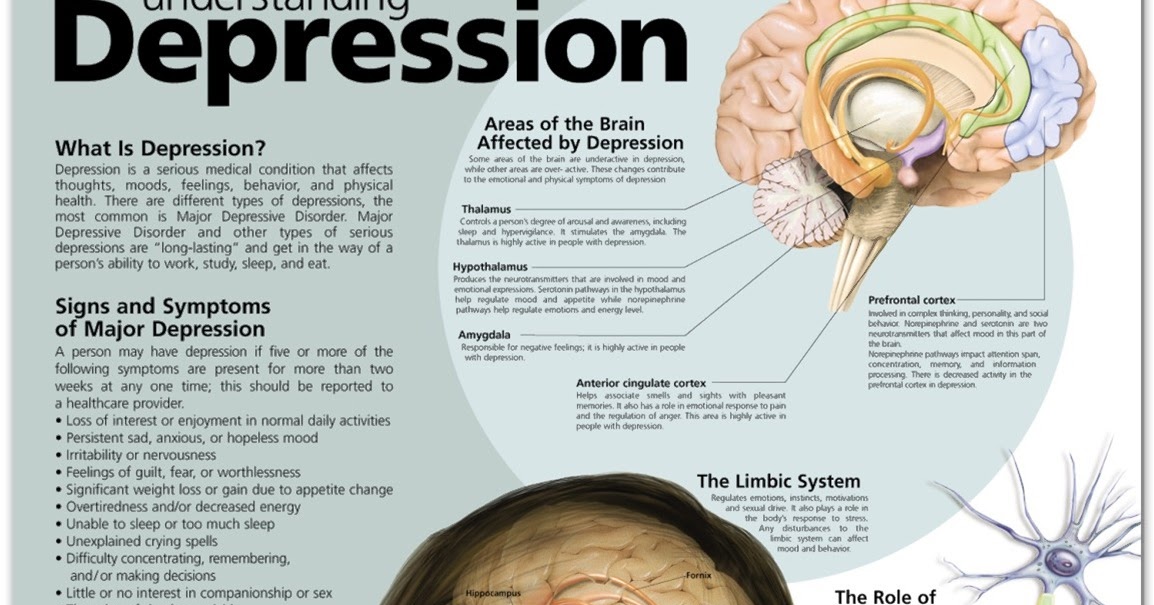 This helps meditators to take problems less personally and approach them more logically.
This helps meditators to take problems less personally and approach them more logically.
This means that, through meditation, we can become better at managing anxiety, stress, and potentially dangerous situations. In addition, the neural connections which grow stronger through meditation help promote empathy and compassion, particularly for people who are most unlike us, says Gladding.
So sitting still and trying to focus on the present moment for as little as 15 minutes per day significantly reduces stress and essentially makes you a better person overall.
4. Drinking coffeeFor centuries humans have participated in the ritual of taking seeds, roasting them, grinding them up, and steeping the grounds in hot water for a quick jolt of energy. Some people won’t get out of bed without the promise of a warm cup of Joe waiting for them. But what is this energizing drink really doing to your brain?
In a post last November, I explained the fascinating science of coffee drinking.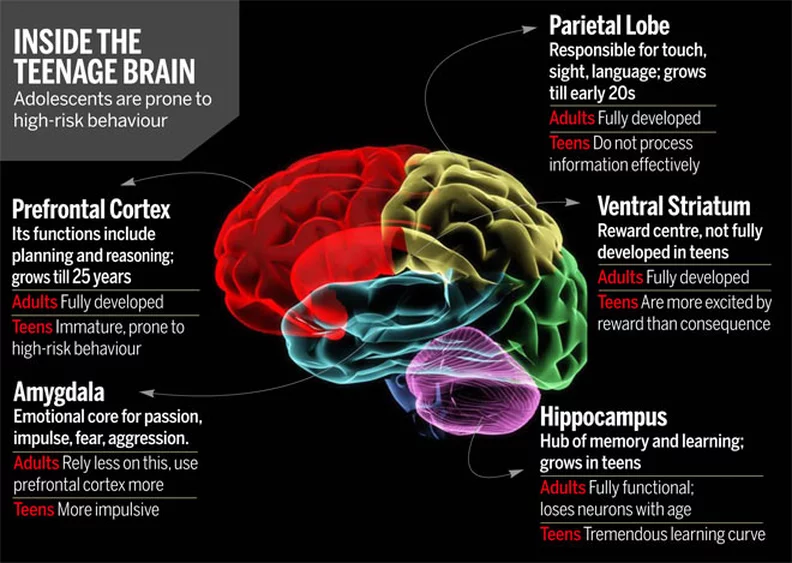 From the time you wake up until you lay down to sleep, neurons in your brain produce a curious chemical called adenosine. As adenosine is produced, it binds with adenosine receptors in the brain, causing you to feel tired and eventually fall asleep.
From the time you wake up until you lay down to sleep, neurons in your brain produce a curious chemical called adenosine. As adenosine is produced, it binds with adenosine receptors in the brain, causing you to feel tired and eventually fall asleep.
When caffeine enters the bloodstream and makes its way to the brain, it blocks the adenosine receptors. That’s what gives you the boost of energy and alertness, improved memory and cognitive performance, increased focus, and even increased accuracy of reactions.
Over time, however, your brain will begin to build up a tolerance to the drug, and you may experience withdrawal symptoms, such as headaches, increased sleepiness, lack of concentration, and irritability.
To sum it up, coffee (really, caffeine) literally changes your brain chemistry, providing you with that boost of energy and focus you need in the morning. But as with anything, it’s best in moderation. (Though, it is somewhat comforting to know it would take dozens of cups of coffee in a very short period of time to kill you.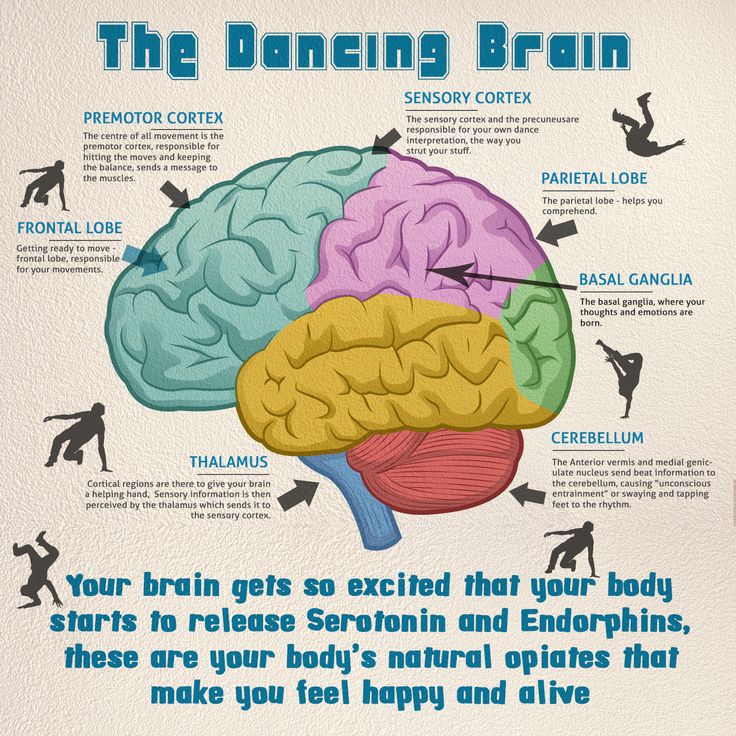 )
)
Ever feel yourself getting swept away in a story, imagining yourself in the shoes of the protagonist and visualizing the fictitious world around you? Getting lost in a book may have a lasting effect on your brain, says a study from study from Emory University.
A group of 21 undergrads were asked to read 30 pages of Pompeii by Robert Harris, followed by a quiz, each night for nine days. Before starting, after finishing the novel, and each morning during the 19-day study, participants were given to fMRIs.
These brain scans “revealed heightened connectivity in the left temporal cortex, the area of the brain associated with receptivity for language,” reports The Atlantic’s Julia Ryan.
In addition, the study showed that readers could experience something called “embodied semantics.” That’s the technical way of saying that the “brain connectivity during a thought-about action actually mirrors the connectivity that occurs during the actual action. For example, thinking about swimming can trigger some of the same neural connections as physical swimming.”
For example, thinking about swimming can trigger some of the same neural connections as physical swimming.”
That means that imagining actions as you read about them can physically alter the connections in your brain. Pretty cool stuff.
6. Listening to musicWhen some people want to truly focus, they seek total silence, but many turn on their music. Turns out, there’s a scientific reason behind this. Ben Greenfield explains:
When you graph the electrical activity of your brain using EEG, you generate what is called a brainwave pattern, which is called a “wave” pattern because of its cyclic, wave-like nature…When we lower the brain wave frequency…we can put ourselves in an ideal condition to learn new information, perform more elaborate tasks, learn languages, analyze complex situations and even be in what sports psychologists call “The Zone”, which is a state of improved focus and performance in athletic competitions or exercise. Part of this is because being the slightly decreased electrical activity in the brain can lead to significant increases in feel-good brain chemicals like endorphins, noroepinephrine and dopamine.

Most importantly, you can actually “force” your brain into this ideal “alpha brain wave relaxation” with the right frequency of music.
In fact, music service focus@will has partnered with leading neuroscientists to curate a selection of tunes designed to help you concentrate while working or studying. Trials carried out by the company show a 12-15% increase in focus and up to 400% longer work session time.
7. Wandering in natureSpending time in outdoor green spaces has been linked to improvements in mood, concentration, and creativity. Now a recent study has given us some insight into the neurological processes that might be creating these benefits.
Gregory Bratman, a graduate student at Stanford University, designed a study that looked at the blood flow to the subgenual prefrontal cortex, the part of the brain associated with brooding. As Gretchen Reynolds explained in a New York Times article on the subject:
Brooding, which is known among cognitive scientists as morbid rumination, is a mental state familiar to most of us, in which we can’t seem to stop chewing over the ways in which things are wrong with ourselves and our lives.
This broken-record fretting is not healthy or helpful. It can be a precursor to depression and is disproportionately common among city dwellers compared with people living outside urban areas, studies show.
In his study, Bratman found that participants who had gone for a 90-minute walk in a quiet, tree-lined neighborhood reported experiencing less morbid rumination and showed less blood flow to the subgenual prefrontal cortex than those who had walked along a busy highway for the same amount of time.
The study suggests that taking the time to wander in nature can in fact change your brain in ways that make you happier.
8. MultitaskingA growing body of research has clearly shown that humans are physically incapable of multitasking. Instead, the human brain merely single-tasks very quickly, switching back and forth between multiple tasks at a rate that makes you feel and believe you’re actually doing two things at once.
But you aren’t.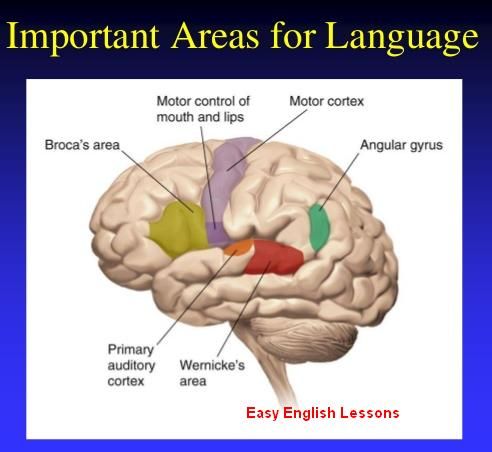 Sorry to be the bearer of bad news.
Sorry to be the bearer of bad news.
If you think you spend much of your time “multitasking”, you could actually be rewiring your brain – and not in a good way.
Clifford Nass, communications professor at Stanford, notes that constant multitasking actually changes the “pathways in our brains.” Your attention span is considerably shortened and your emotional intelligence is stunted. At the same time, you become worse at sorting through information and completing creative tasks.
Maybe it’s time you close out of some browser tabs and logout of Twitter for a while. Here are 19 ways to be kind to your brain by turning single-tasking into a habit.
9. Eating sugarThe average American consumes five times the amount of sugar they should be eating on a daily basis, according to Natasa Janicic-Kahric of Georgetown University Hospital. In addition to contributing to obesity and diabetes, sugar consumption also has scary effects on your brain’s health.
Overconsumption of sugar may impair neurological functioning, according to a study on rats done by researchers at UCLA.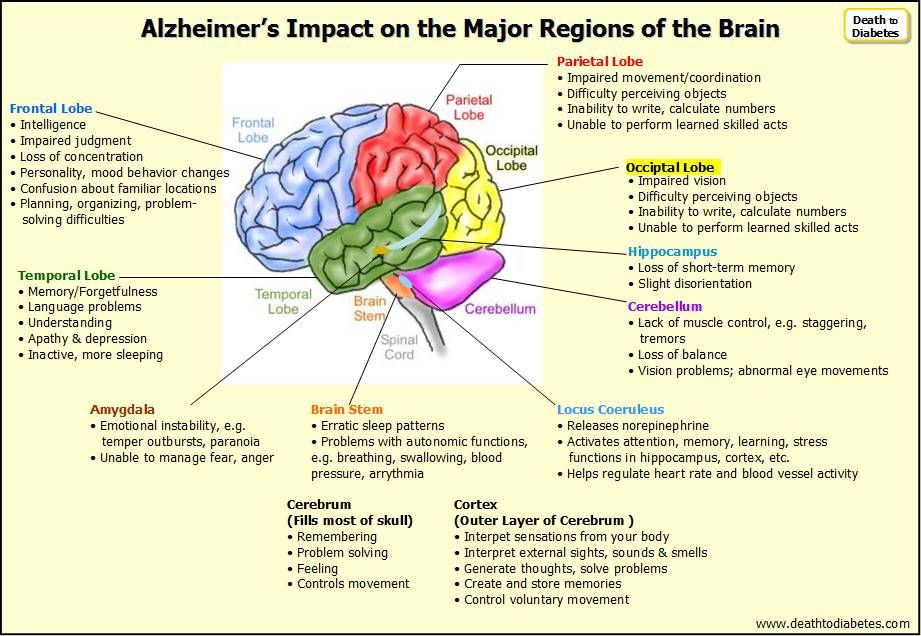 As the Carolyn Gregoire of the Huffington Post reported:
As the Carolyn Gregoire of the Huffington Post reported:
Heavy sugar intake caused the rats to develop a resistance to insulin — a hormone that controls blood sugar levels and also regulates the function of brain cells. Insulin strengthens the synaptic connections between brain cells, helping them to communicate better and thereby form stronger memories. So when insulin levels in the brain are lowered as the result of excess sugar consumption, cognition can be impaired.
In this way, eating too much sugar can impair memory and learning skills, and may even contribute to neurodegenerative diseases like Alzheimer’s and dementia.
But that’s not all. Including too much of the sweet stuff in your diet has been shown to correlate with increased risk of depression. Sugar activates the mood-enhancing neurotransmitter serotonin in our brain. When continuously overstimulated, our serotonin levels begin to deplete, making it more difficult for us to regulate our mood.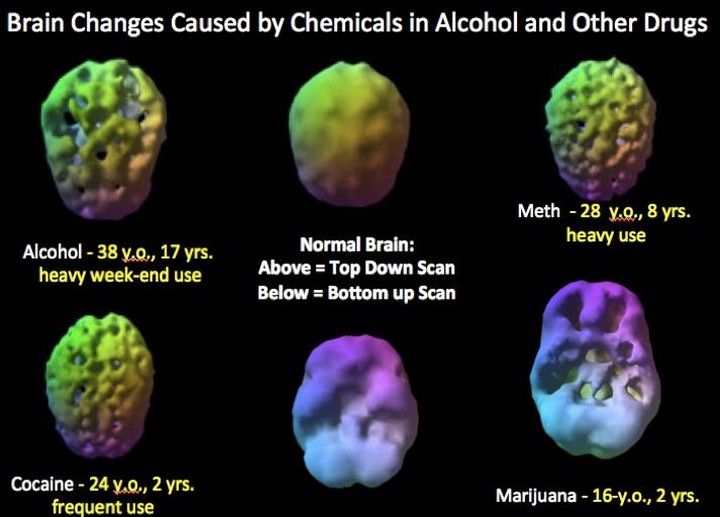
Finally, it turns out that simply believing that you have the power to physically change your brain can in fact help you change your brain.
Carol Dweck explained the significance of what she called a “growth mindset” in her famous TED Talk titled “The Importance of Believing You Can Improve.” To sum up her profound point, kids who are taught that they didn’t correctly solve a problem or pass a test yet showed more willingness to learn and improve than those graded on a simple pass/fail system:
Just the words “yet” or “not yet,” we’re finding, give kids greater confidence, give them a path into the future that creates greater persistence. And we can actually change students’ mindsets. In one study, we taught them that every time they push out of their comfort zone to learn something new and difficult, the neurons in their brain can form new, stronger connections, and over time they can get smarter.

The benefits of a growth mindset aren’t limited to school children. Approaching challenges with an attitude that embraces growth and improvement can give us the grit we need to push our limits, strengthen beneficial neural connections, and create entirely new ones well into old age.
I don’t know about you, but I find that incredibly comforting.
How to Rewire Your Brain: 6 Neuroplasticity Exercises
Experts have yet to determine the limits of the brain’s abilities. Some believe we may never fully understand them all. But evidence does support the existence of one of its most important processes: neuroplasticity.
“Neuroplasticity” refers to your brain’s ability to restructure or rewire itself when it recognizes the need for adaption.
In other words, it can continue developing and changing throughout life.
For example, if brain trauma after a car accident affects your ability to speak, you haven’t necessarily lost this ability permanently. Therapy and rehabilitation can help your brain relearn this ability by repairing old pathways or creating new ones.
Neuroplasticity also seems to have promise as a driver of potential treatment for certain mental health conditions.
Experts believe the negative thought patterns that occur with depression, for example, could result from interrupted or impaired neuroplasticity processes. Exercises that promote positive neuroplasticity, then, may help “rewrite” these patterns to improve well-being.
Rewiring your brain might sound pretty complicated, but it’s absolutely something you can do at home.
Yes, you read that right.
Debate over the potential benefits and risks of video games can get pretty contentious, but if you enjoy gaming, there’s some good news: Research suggests this hobby can have plenty of cognitive benefits.
The benefits associated with gaming include improvements in:
- motor coordination
- visual recognition and spatial navigation
- memory and reaction time
- reasoning, decision making, and problem-solving skills
- resilience
- cooperation and team participation
In short, when you play video games, you teach your brain new skills. These effects can improve your gameplay, certainly, but they also carry over to the rest of your life:
- Learning to recover from failure in a game can help you get better at bouncing back from setbacks.
- Exploring different solutions to a task in a game can help enhance creative thinking.
Different games, different benefits
According to a 2019 review, different types of games may offer varying benefits:
- 3-D adventure games seemed to contribute to improvements in memory, problem-solving, and scene recognition.
- Puzzle games help boost problem-solving skills, brain connectivity, and spatial prediction.

- Rhythm gaming, like dance or exercise video games, can help improve visuospatial memory and attention.
These effects appear to kick in after about 16 hours of gameplay. This doesn’t mean you have to play for 16 hours at once, of course — this actually isn’t recommended.
But adding a few hours of weekly gameplay to your leisure time can be a great way to improve neuroplasticity.
Ever considered studying another language? Maybe you thought a second (or third) language might boost your career opportunities, or you wanted to pick it up just for fun.
In either case, you’d be doing your brain a big favor. There’s plenty of evidence to suggest that acquiring a new language improves cognitive function.
Boost gray matter…
In one 2012 study, researchers looked at 10 exchange students who were native English speakers studying German in Switzerland. After 5 months of intensive language study, their proficiency in German had increased — and so had the density of gray matter in their brain.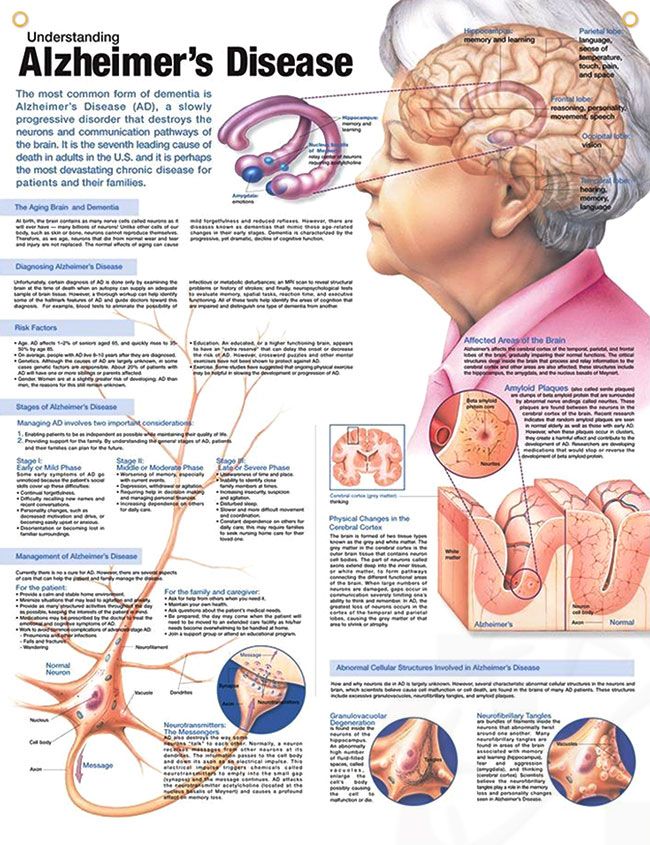
Gray matter houses many important regions in your brain, including areas associated with:
- language
- attention
- memory
- emotions
- motor skills
Increased gray matter density can improve your function in these areas, especially as you age.
In fact, it’s believed bilingualism may offer some protective benefits against cognitive decline. Learning a language at any stage of life could help slow down future decline related to age, including symptoms of dementia.
Another 2012 study found evidence to support the idea that picking up a new language increases gray matter density and neuroplasticity.
After 3 months of intensive study of a new topic, 14 adult interpreters saw increases in both gray matter density and hippocampal volume. The hippocampus plays an important role in long-term memory recall.
…and white matter
According to 2017 research, learning a second language in adulthood can also strengthen white matter, which helps facilitate brain connectivity and communication between different brain regions.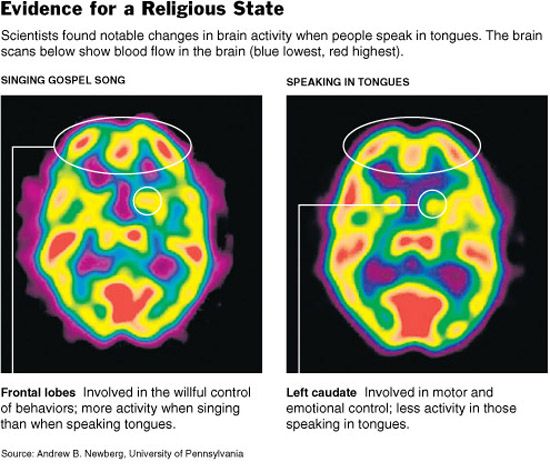
Studying a new language at any age can lead to:
- stronger problem-solving and creative thinking skills
- improved vocabulary
- greater reading comprehension
- increased ability to multitask
You may have heard of online programs and apps like Rosetta Stone, Babbel, and Duolingo, but you can study languages in other ways too.
Hit your local secondhand book store for textbooks, or check your library for books and CDs.
Whatever method you choose, try to stick with it for at least a few months, even if you only do 10 or 15 minutes of study a day.
Music has several brain benefits. It can help improve your:
- mood
- ability to learn and remember new information
- concentration and focus
Music therapy also appears to help slow down cognitive decline in older adults.
Research from 2017 suggests music, especially when combined with dance, art, gaming, and exercise, helps promote neuroplasticity.
It can improve movement and coordination and may help strengthen memory abilities. But it doesn’t just help prevent additional cognitive decline. It can also help relieve emotional distress and improve quality of life.
According to a 2015 review, musical training also has benefits as a neuroplasticity exercise.
Learning to play music in childhood can help protect against age-related cognitive decline and lead to improved cognitive performance in older adulthood, for one.
Research also suggests musicians often have:
- better audio and visual perception
- greater focus and attention
- better memory
- better motor coordination
It’s never too late to learn an instrument. Online tutorials can help you get started, especially if you don’t want to splurge on lessons.
Check your local classified ads for used instruments, or try out inexpensive options like a ukulele, harmonica, or keyboard (as an added bonus, many people find these instruments pretty easy to learn).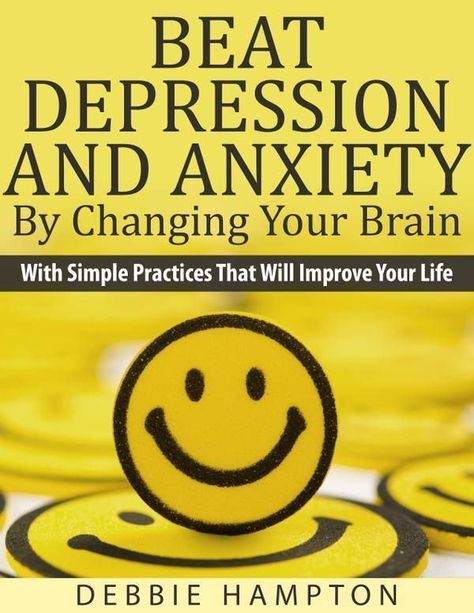
Not very musical? That’s OK! Even listening to music more regularly can help increase brain neuroplasticity. So turn on your favorite playlist — it’s good for your brain.
If you enjoy travel, here’s one more reason to get out and explore somewhere new: Travel may help enhance cognitive flexibility, inspire you, and enhance creativity.
Experiencing new scenery and surroundings can also help you learn about different cultures and become a better communicator, both of which can have additional cognitive benefits.
Visiting new places can also help broaden your general worldview, which can help open your mind and give you a new perspective on things closer to home, like career goals, friendships, or personal values.
If you can’t get out into the wider world right now, don’t worry. You can still take yourself on a trip closer to home.
Try:
- taking a long walk through a new neighborhood
- doing your grocery shopping in another part of town
- going for a hike
- virtual travel (get started with National Geographic virtual travel on YouTube)
Most people recognize that exercise offers a number of physical benefits:
- stronger muscles
- improved fitness and health
- better sleep
But physical activity also strengthens your brain.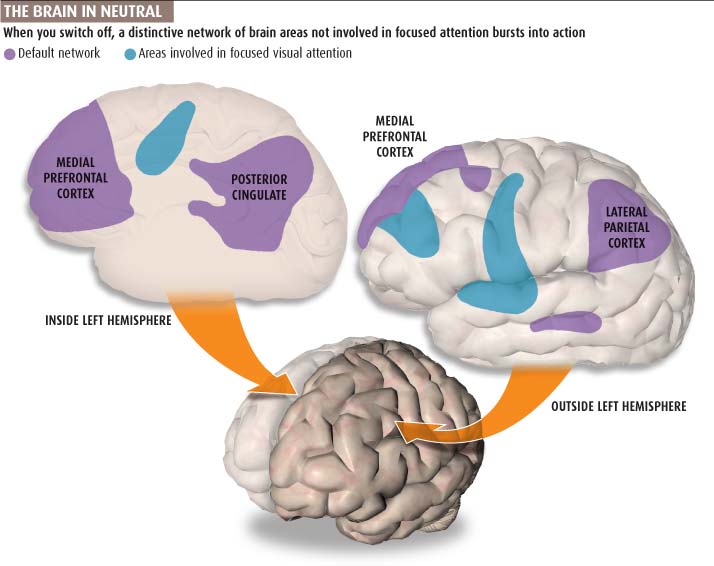 Exercise — aerobic exercise in particular — can lead to improvements in cognitive abilities like learning and memory.
Exercise — aerobic exercise in particular — can lead to improvements in cognitive abilities like learning and memory.
According to a literature review from 2018, exercise also helps improve fine motor coordination and brain connectivity, and may protect against cognitive decline.
Another benefit of physical activity as a neuroplasticity exercise? It helps promote increased blood flow and cell growth in the brain, which research links to reduced depression symptoms.
If you exercise with someone else or in a larger group, you’ll probably see some social benefits too.
Strong social connections improve quality of life and emotional wellness, so engaging with others more regularly can be another great way to boost brain health and help relieve symptoms of anxiety and depression.
Exercise recommendations can vary, depending on your age, ability, and health, but it’s a good idea to get at least a little activity every day.
Creating art can help you see the world in new, unique ways.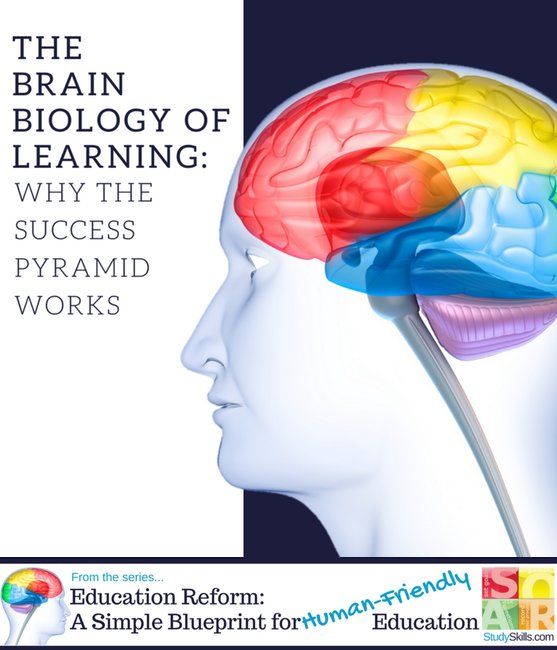 You might use art to sort through and express emotions, share personal experiences, or get deeper insight on personal struggles, for example.
You might use art to sort through and express emotions, share personal experiences, or get deeper insight on personal struggles, for example.
Research from 2015 suggests art forms such as drawing and painting directly benefit your brain by enhancing creativity and improving cognitive abilities.
Artistic pursuits can also help create new pathways and strengthen existing connections in your brain, leading to better cognitive function overall.
No artistic experience? No problem. Like many skills, artistic abilities often improve with time and practice.
YouTube offers plenty of painting tutorials, and your local library (or any bookstore) will likely have books on drawing or sketching for people of any skill level.
Embrace unfocusing
Even simple doodling can offer brain benefits by activating the brain’s default mode network, which allows your brain to briefly unfocus.
This occasional mental downtime directly relates to neuroplasticity. Letting your brain rest can:
- improve creativity
- interrupt unwanted habits
- help you find new solutions to problems
So, next time you find yourself waiting on something with empty hands, pick up a pen and get doodling.
Art can also help promote relaxation, so consider building time for art into your week. Involve your partner and family, too — everyone benefits here.
Experts previously believed that after a given point in life, your brain could no longer change or develop further. Now they know this isn’t true.
With a bit of time and patience, you can rewire your brain, which may help with certain mental health symptoms and protect against cognitive decline.
Crystal Raypole has previously worked as a writer and editor for GoodTherapy. Her fields of interest include Asian languages and literature, Japanese translation, cooking, natural sciences, sex positivity, and mental health. In particular, she’s committed to helping decrease stigma around mental health issues.
How to slow down age-related changes in the brain?
With the rise in the level of medicine, the average life expectancy has increased - on average, in countries, men and women live 65–70 years.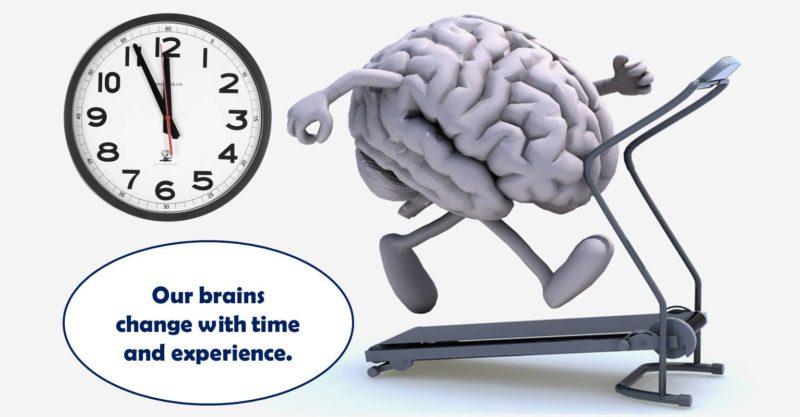 With an increase in life expectancy, diseases associated with the aging of the body have arisen. One of these problems is age-related changes in the brain that reduce mental performance in older people. We tell you what it is, why they occur and how to prevent them.
With an increase in life expectancy, diseases associated with the aging of the body have arisen. One of these problems is age-related changes in the brain that reduce mental performance in older people. We tell you what it is, why they occur and how to prevent them.
What is it and when do 9 appear0005
Age-related changes in the brain are a gradual decrease in mental performance due to disturbances in the structure of nerve cells, intercellular connections, and a decrease in gray matter volume. Changes occur at all levels: from tissues to molecules and begin to form at the age of 20–25 years. In youth, this is imperceptible: they are compensated by the plasticity of the brain and its high ability to self-heal.
Over time, age-related changes are more noticeable: people remember worse, it is more difficult for them to concentrate, they learn more slowly and more often make mistakes in everyday activities. But this does not mean that cognitive functions can be put an end to.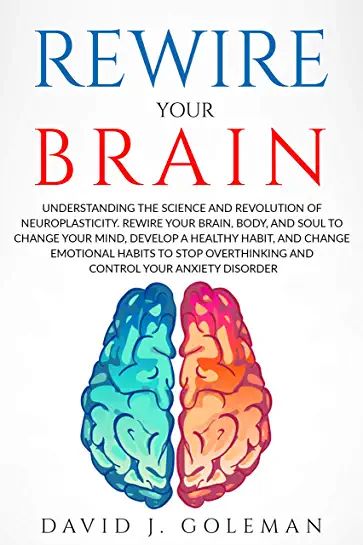 For example, research shows that in adulthood people perform better on tests of verbal ability and spatial reasoning than younger people.
For example, research shows that in adulthood people perform better on tests of verbal ability and spatial reasoning than younger people.
Age-related changes occur in everyone, regardless of gender and social status. However, education and occupation still influence.
“The lower the level of education and the intellectual load on the brain, the faster the emotional and mental degradation sets in,” says cardiologist and family doctor at GMS Clinic Mikhail Glotov.
Age-related changes, or more simply, brain aging, is the same normal process as graying of hair, a decrease in muscle volume, a decrease in visual acuity, hearing, and skin elasticity. They should not be confused with brain disorders - diseases of the nervous system that lead to a decrease in intelligence mainly in the elderly - Alzheimer's disease, Pick's disease or dementia with Lewy bodies.
Why the brain gets old
The first reason is oxidative stress.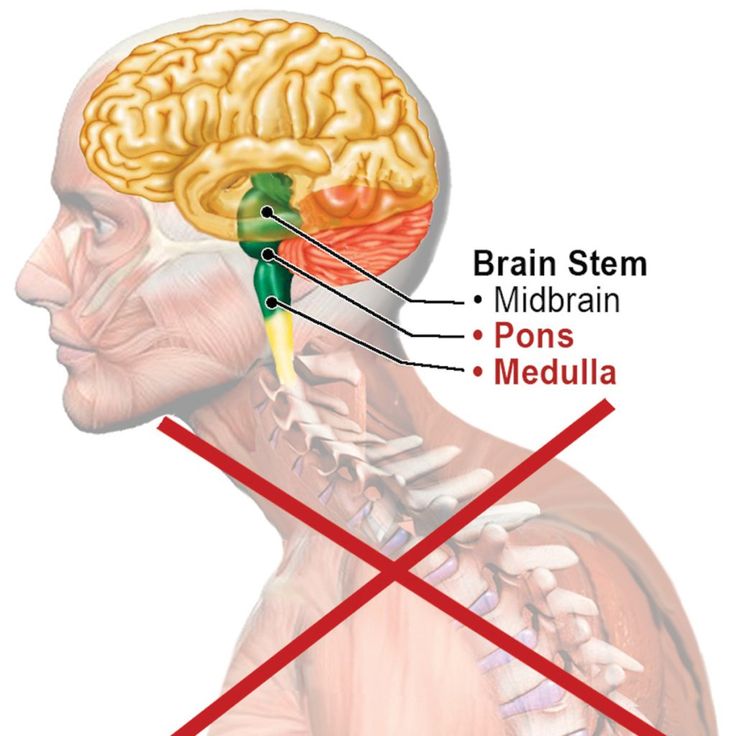 Biochemical processes take place in all cells, as a result of which waste products accumulate. Normally, they are utilized and removed from the cell. But with age, some recycling processes are disrupted, and the amount of waste in the cell increases, including the accumulation of free radicals.
Biochemical processes take place in all cells, as a result of which waste products accumulate. Normally, they are utilized and removed from the cell. But with age, some recycling processes are disrupted, and the amount of waste in the cell increases, including the accumulation of free radicals.
These are unstable atoms that damage the cell membrane, cellular organs and DNA. Their accumulation leads to oxidative stress, a process when cells and their internal structures are damaged due to excessive oxidation.
It disrupts the structure of DNA inside the cell nucleus and mitochondria, the energy center of the cell, where many structural errors accumulate. This leads to damage, death and malfunction of brain neurons.
“Toxins and combustion products in cigarette smoke increase oxidative stress,” says Dmitry Malyshev, a neurologist at the MedSwiss clinic. “Therefore, in smokers, age-related changes in the brain occur faster. The same applies to alcohol, which increases the risk of developing cerebrovascular pathologies.
”
The second reason for the decline in mental performance in old age is changes in synapses. These are the nerve connections that connect neurons to each other. As people age, the density of synaptic gaps decreases, and the fewer connections between neurons, the slower mental activity, such as memorizing or learning a new skill, proceeds. At the same time, an elderly person can perform the task just as well as a young person, but he will need more time to think and make decisions.
The third reason is demyelination. The processes of neurons are covered with myelin, thanks to which an electrical impulse travels at high speed from cell to cell. With age, myelin becomes less and less, due to which the speed of transmission of a nerve impulse slows down.
Together, these causes give the following result - with age, the brain decreases in size, the volume of gray and white matter decreases, and the transmission of the nerve impulse is disrupted.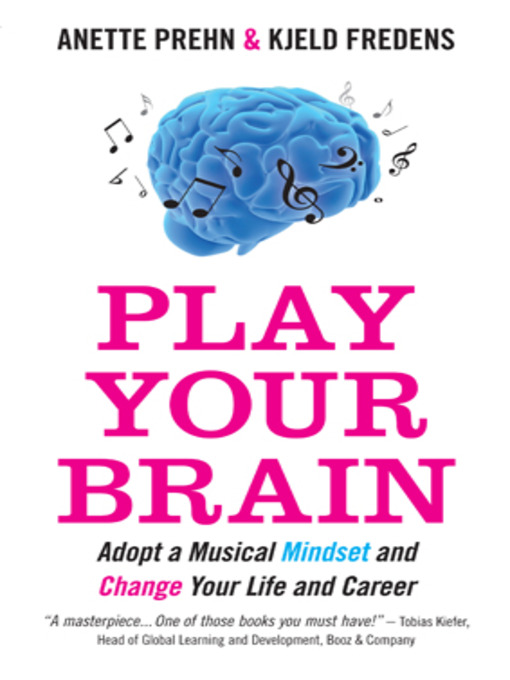 All this impairs mental faculties.
All this impairs mental faculties.
How brain aging manifests itself
In adulthood, defense mechanisms no longer have time to correct failures in nerve cells, therefore, after 30-35 years, the first signs of age-related changes appear - the amount of RAM, which is responsible for remembering actual actions and events, decreases. For example, a person may forget where he left his parked car, buy some groceries from a shopping list, or what he did this morning.
Brain aging means that cognitive processes slow down in older people. But this slowdown is not critical - healthy elderly people without nervous and mental illnesses also remember phone numbers, license plates or the place where they left the keys to the door, but they need more time to restore events from memory than young people.
With age, the amount of accumulated knowledge decreases in the elderly, events from autobiographical memory begin to disappear. At the same time, procedural memory, which is responsible for storing information about skills, is practically not disturbed. For example, if a young man once learned to ride a bicycle or drive a car, then in old age he will not forget how to drive, but he may forget which road he took to get to school, the name of the first boss at work, or the name of the capital of Germany. The same goes for muscle memory: skills, such as playing a musical instrument or the ability to dance, are fixed almost until the end of life.
For example, if a young man once learned to ride a bicycle or drive a car, then in old age he will not forget how to drive, but he may forget which road he took to get to school, the name of the first boss at work, or the name of the capital of Germany. The same goes for muscle memory: skills, such as playing a musical instrument or the ability to dance, are fixed almost until the end of life.
Elderly people have reduced concentration. With age, it becomes increasingly difficult to concentrate on a task or focus on a conversation in a noisy place. The ability to divide attention is also reduced. If in youth it is possible to cook dinner at the same time and listen attentively to the radio playing in the background, then in old age it is more difficult to do this - you need more strength to do several things at the same time.
How to slow down age-related changes
There are two ways: change your lifestyle and learn. Studies show that people with obesity and a habit of regularly eating sugar and drinking sugary sodas have 10 years earlier brain aging.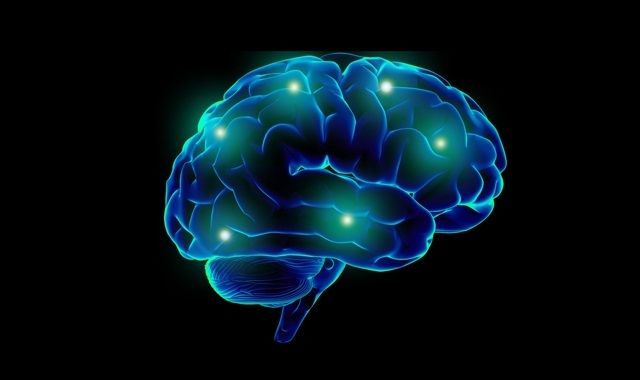 To delay it, you should adjust your lifestyle - bring your body weight back to normal and reduce your daily sugar intake.
To delay it, you should adjust your lifestyle - bring your body weight back to normal and reduce your daily sugar intake.
Researchers claim that brain aging in people occurs more slowly if they:
- regularly engage in physical activity: running, playing football, swimming, exercising in the gym
- constantly load themselves with intellectual activities: read books, solve puzzles, write poetry, study foreign languages
- are socially active: visit museums, communicate regularly with friends and relatives, travel
- have stress management skills
- eat healthy
- sleep at least 7-8 hours a day.
“There are many ways to slow down age-related changes in the brain. The question is that they captivate a person,” says Dmitry Malyshev. “Any action that affects the sphere of brain activity will be useful: the development of memory, attention, and speech, counting, communication, spatial thinking.
”
Daily physical activity in the form of aerobic and strength exercises for 45 minutes increases mental capacity in people over 50 years old. At the same time, the results of other studies report that in people over 50 who do not engage in physical activity, a five-year brain aging is comparable to a ten-year one.
Age-related changes in the brain are slowed down by playing musical instruments. Studies show that playing or learning an instrument increases neuronal activity, which compensates for the physiological aging of nerve tissue. There are no restrictions on the choice of a musical instrument: it can be a violin, harmonica, banjo or electric guitar.
“Reading, learning foreign languages and developing fine motor skills slow down the development of age-related changes in the brain,” says Mikhail Glotov. “For example, residents of southern Italy who are engaged in tailoring and shoe making are less likely to develop dementia and Alzheimer's disease than in other regions.
”
The Mediterranean diet is recognized as the most healthy and beneficial for the nervous system and cardiovascular system. One of the main factors is a diet containing omega-3 and omega-6 fatty acids. We have already talked about them in detail. Studies also report that people who add kale, spinach, eggs, and avocados to their diet have slower brain aging.
Important to remember
- The first signs of brain aging appear after 30 years
- Aging is a natural physiological process, not a disease
- Causes - oxidative stress, demyelination and decreased density of synapses, lead to a decrease in the volume of the medulla
- Age-related changes are manifested by a gradual deterioration of mental processes: thinking, memorization, attention, orientation
- Brain aging can be slowed down by physical activity, proper eating habits and regular intellectual activity.
Neuroplasticity: how to make the brain work better
Health
© absolutvision/unsplash
Author Irina Rudevich
December 05, 2019
Scientists say that by training the brain through new experiences, you can restore it after damage and achieve a lot in personal development. Let's talk about how this can be achieved.
Let's talk about how this can be achieved.
Chains of neurons, nerve cells of the brain responsible for the transmission of information, are regenerated, just like body tissues. There are cases when people returned to normal life after traumatic brain injury and stroke. Dr. Celeste Campbell, a neuropsychologist at the Veterans Medical Center in Washington DC, says that physiological changes occur in the brain as a result of interaction with the environment. This is neuroplasticity. In addition to it, there is the concept of neurogenesis, according to which the brain can not only change existing connections and create new ones, but also grow neurons.
From the moment of birth and throughout life, cells reorganize according to human needs, allowing them to adapt to what is happening. The brain can be compared to a computer, but the latter runs on fixed algorithms that require software updates. The process of building new neural connections occurs constantly, but if it is stimulated, the cells will be updated faster, and the abilities will develop more actively.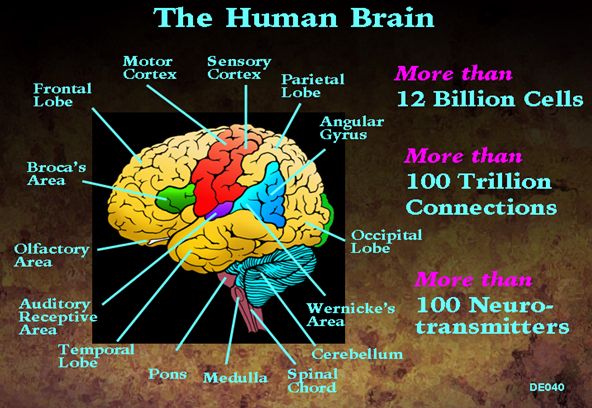
Advertising on RBC www.adv.rbc.ru
Neuroplasticity experts Christopher A. Shaw and Jill K. McEachern believe that neuroplasticity is a fundamental process that describes changes in neural activity in the brain. Specialists divide the area of research into two parts: functional and structural. The first describes changes in synapses (neurons) due to learning and development, the second describes the strength of the connections between them. Neuroplasticity is of interest not only to chemists and neuroscientists, but also to psychologists, as it suggests the potential for changes in learning, behavior, and mood.
If you constantly perform the same actions, relying on habitual reactions, then a person runs the risk of starting to live “on the machine”. So work turns into a routine, and relationships with loved ones and the emotional state go into a stagnant mode. Experts are exploring the possibilities of overcoming thought patterns, because constant practice can make significant changes in the structure and function of the brain.
© neonbrand/unsplash
Without changing habits and in the absence of new knowledge, a person uses a small part of neurons. Neuroscientist Richard Davidson founded the Institute for Healthy Thinking and, together with its specialists, conducted a number of studies. The scientist believes that people are able to purposefully create connections in the brain that help to become happier. At the same time, each of us has the most active different parts of the brain. For example, according to Davidson's research, optimists have a better developed area of the prefrontal cortex. The neuroscientist points out that with the help of special exercises, pain, stress and depression can be dealt with by activating the neural connections that are responsible for the feeling of joy.
Neuroplasticity is unique in that new abilities appear almost instantly, but it takes at least seven days of training for the chains of neurons to be stable. Moreover, this time is enough for a person of any age, although over the years the speed of information perception may decrease. Richard Davidson believes that it is enough to spend half an hour a day to learn new things and consolidate this knowledge. When a person is faced with a task that has not been solved before, the brain activates hidden resources. Anything can be such an exercise - from a new route home from work to learning a foreign language.
Richard Davidson believes that it is enough to spend half an hour a day to learn new things and consolidate this knowledge. When a person is faced with a task that has not been solved before, the brain activates hidden resources. Anything can be such an exercise - from a new route home from work to learning a foreign language.
© alice achterhof/unsplash
Researcher Lawrence Katz created a direction for brain training called neuroscience. This practice helps to form new, more effective connections for the development and well-being of a person. At the heart of training is a change in patterns that affects the five senses. Exercises can be performed without special training, at any time of the day and in any place. For example, Katz advises starting the day differently. Set a different alarm sound and make tea instead of coffee. A persistent association with the smell of the latter can be interrupted by home fragrances and periodically changed to update perception. Engage tactile sensations and spatial memory in a familiar place: try to have breakfast in silence if you are used to listening to music, or look out the window instead of the monitor.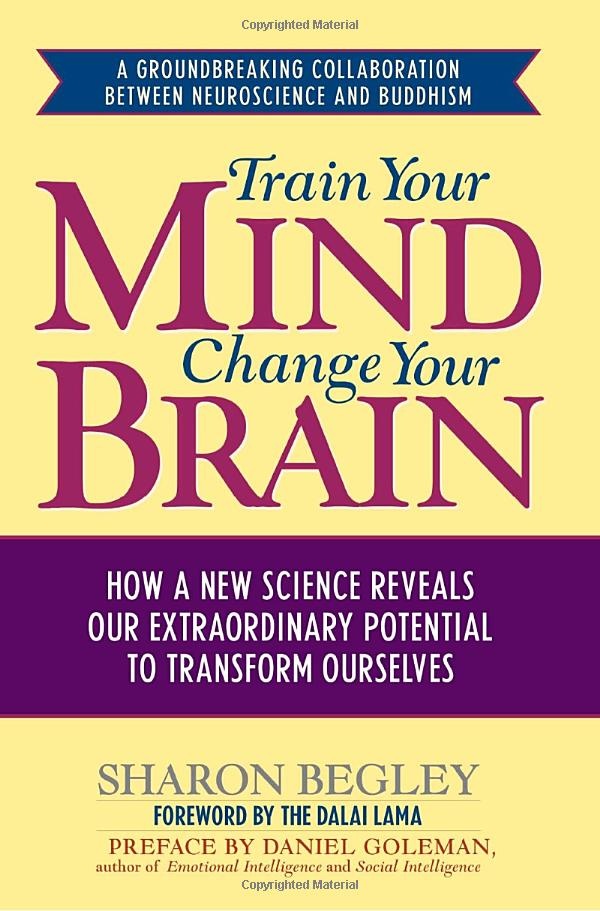
If you have a busy schedule and don't want to drastically change your usual things, Lawrence Katz suggests looking at them differently. On the shelf or table next to your workplace, there are probably items that have been standing there for a long time (calendar, figurine, framed photograph). The researcher advises turning them upside down. How it works: when looking at a thing, the logical part of the brain instantly processes the information, and then abstract thinking is connected. If the brain has identified the object as familiar, then it does not need to activate the thought process: the thing becomes “part of the landscape” and the person does not pay attention to it. An unusual picture requires additional neural resources, connects the creative right hemisphere and analytics of form, color combinations, and object qualities. Such a reorganization will bring the effect of novelty and allow you to break the pattern of thinking.
For full recovery, the brain needs sleep, proper nutrition and sports.